Stop and See the Orchids
It is a common misconception that all orchid flowers are highly fragrant. The fact is many orchids have little or no fragrance at all. While taking time to “stop and smell the orchids” may be an exercise in futility, there are other reasons to slow down and appreciate the intricacies of orchid flowers.
Most flowers have many specialized structures in common – orchids have just put their own spin on many of these shared features.
Many non-orchid flowers have a whorl of protective leaf-like structures at the base of each blossom known as sepals. Orchids also have sepals, but they are frequently colorful and rather than having a leaf-like appearance, they more closely resemble the petals of the flower.
What most of us recognize as the actual flower is a collection of flower petals. In most flowers, all the petals are fairly similar. In orchid flowers, one petal is distinctly modified to form a landing platform or guide for pollinators. This modified petal is called a lip, or labellum.
Together, the sepals and petals form what is known as the perianth. The perianth may serve to attract or guide pollinators to the sexual parts of the flower, but it is generally not directly involved in the reproductive process of the plant.
The reproductive parts of a flower are the female pistil (including the stigma, style, and ovary) and the male stamen (including the filament and anther). In most flowers, these are all distinctive individual structures. In orchids, they are fused into one collective part known as the column.
Orchids also have unique pollen. While most flowers produce tiny dust like pollen grains, orchid pollen is held in sticky masses known as pollinia.
As you enjoy the orchid blossoms on display during the Orchid Showcase, be sure to take time to look closer and admire the details of the orchid flowers that Mother Nature has spent so much time perfecting.
The Orchid Showcase is on view now through February 21 in the Orangery and is included with general admission. Be sure to check it out!
Gallery
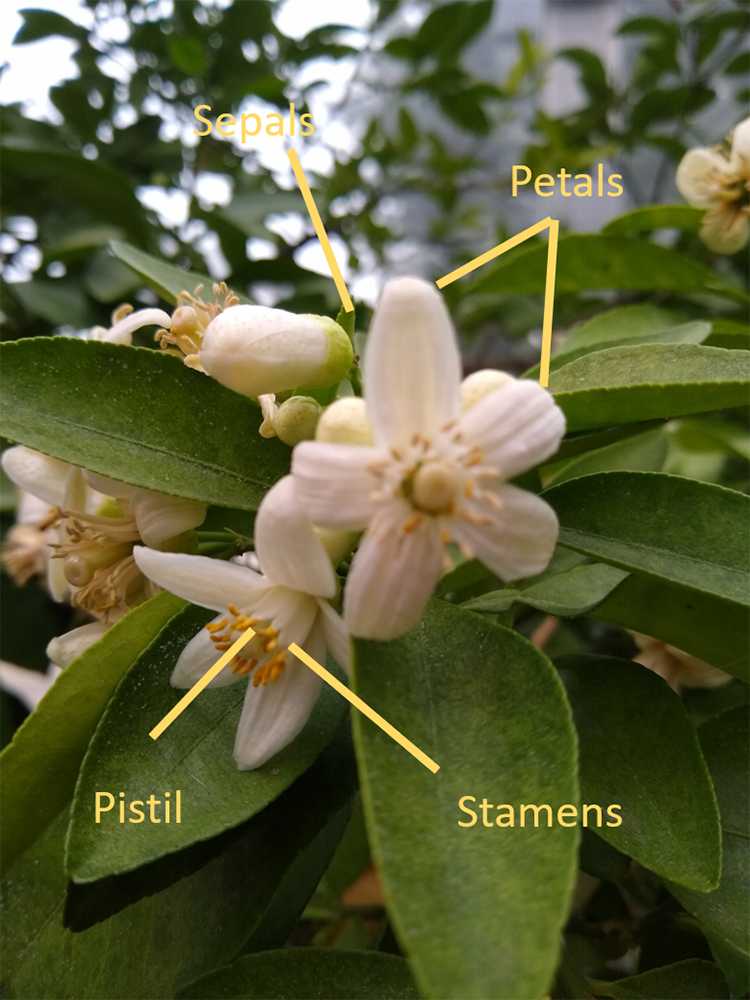
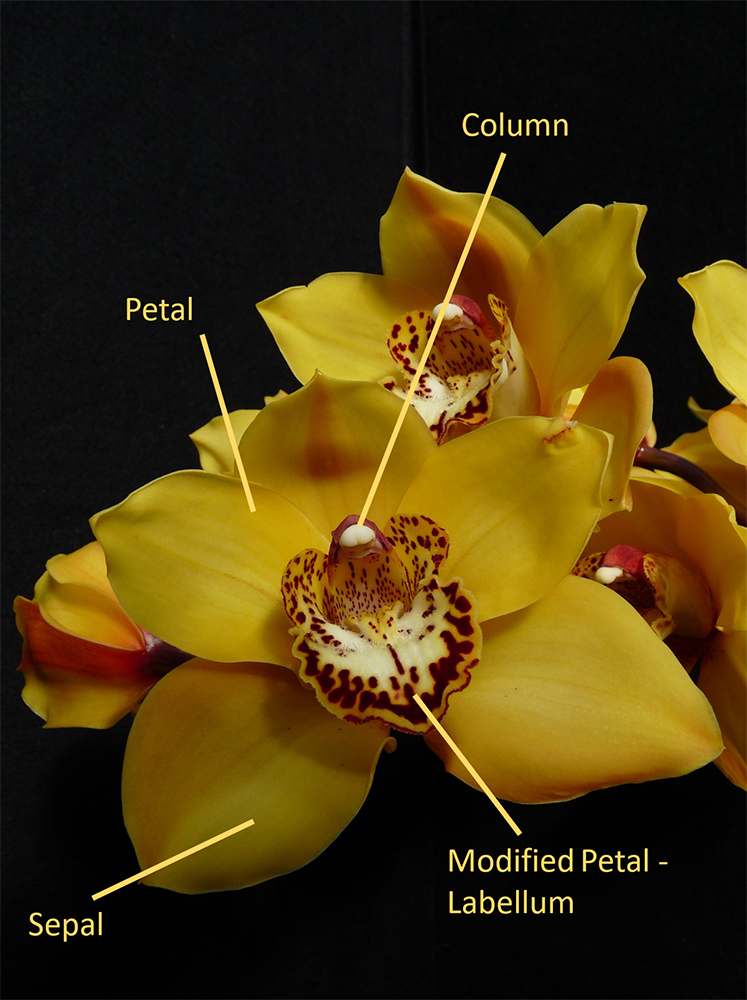
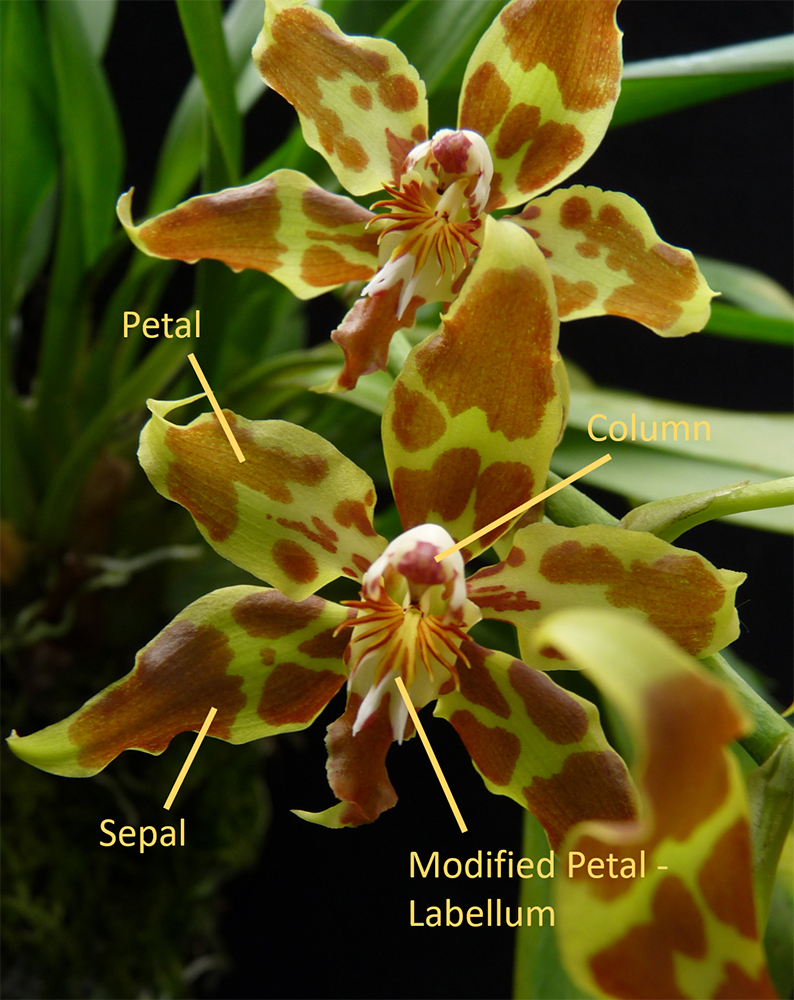
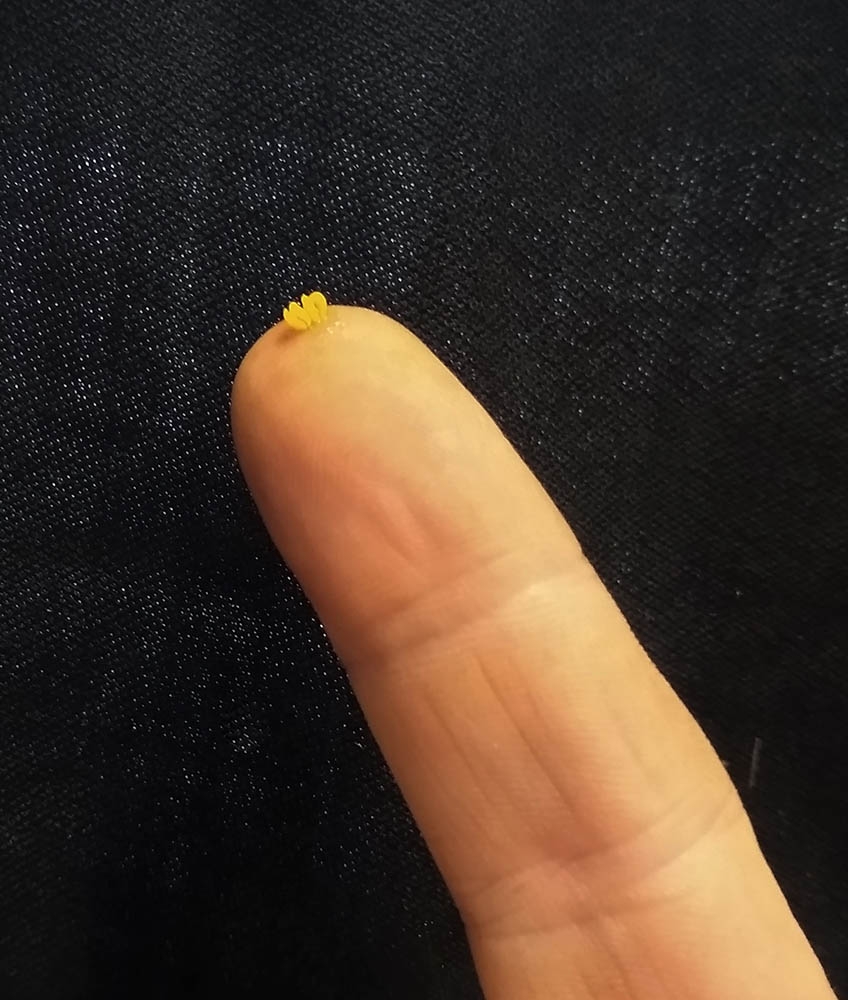
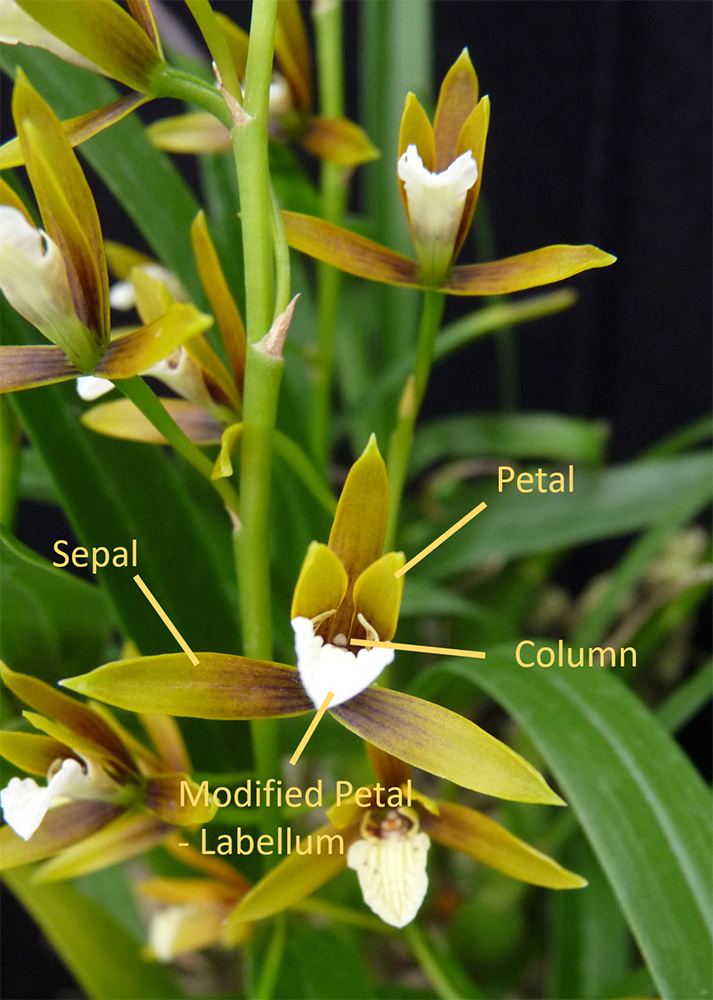
Add new comment